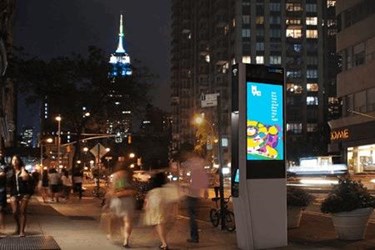Expanding And Improving Public Wi-Fi — Panacea Or Pipe Dream?
By Ed Biller

When the president of the European Commission gave his State of the Union speech last month, it was one of his less significant talking points that made big waves.
“We propose today to equip every European village and every city with free wireless Internet access around the main centers of public life by 2020,” Jean-Claude Juncker announced. Then he laid out the €120 million plan, whose budget would need to be approved by the European Parliament.
Less than two weeks later, Google announced a new public Wi-Fi initiative called Google Station, which promises "fast Wi-Fi for everyone." Google’s platform builds on a project that began in India —in partnership with RailTel and Indian Railways — that provides Wi-Fi service in train stations. About 3.5 million people use the still-expanding service every month, and Google wants to bring the program’s utility to public places across the world.
To accomplish this, Google has built a suite of tools to help its partners create and maintain a public Wi-Fi connection. Beyond just providing simple hardware, the tech giant would handle login info for the various hotspots and help Wi-Fi hosts to monetize their connections — handling payments for access fees or installing advertisements – should the host wish to charge for Wi-Fi service.
Google is urging companies and individuals to contact the company to discuss how they can collaborate to bring internet access to more people. "We'll be partnering with large venues and organizations, network operators, fiber providers, system integrators and infrastructure companies," states the Google Station website.
These bold plans bring with them the promise of new jobs — presumably to establish and maintain the proposed networks. Juncker said the plan has “the potential to create two million jobs in the EU.” Left out is the United Kingdom, whose June 23 vote to leave the EU likely excludes it as a beneficiary of this legislation.
So, assuming the European Parliament approves the free Wi-Fi access plan’s budget, and Google finds adequate partners to proliferate Google Station sites across the globe, what obstacles could stand in the way of omnipresent public Wi-Fi?
First, regulatory and copyright hurdles exist. In September, the European Court of Justice (ECJ) ruled in the case Sony v McFadden that providers of open (i.e., not password protected) Wi-Fi are not liable for copyright violations committed by others; however, Wi-Fi providers can be ordered to prevent further infringements. They can accomplish this in several ways, including monitoring all traffic, requiring registration with the network, or implementing password protection. Only the last option was deemed legal by the ECJ, and a solution that satisfies all parties has yet to be proposed.
Per the Electronic Frontier Foundation, a nonprofit organization dedicated to defending civil liberties in the digital world, “Universal access to the net will ultimately require curbing the power of a copyright industry which sees free networks as a threat to their property, something to be controlled and monitored rather than opened up and shared.”
Next, there are the logistical challenges: among them, physically setting up the wireless infrastructure, securing setup and maintenance funding, and determining how to ensure that the Wi-Fi is, indeed, accessible. (Have you ever tried to log onto the “guest” network in a restaurant or a store, only to meet with failure to connect or an impossibly slow connection? Then you know what I mean.)
Australia’s iiNet (later acquired by TPG) recently collaborated with the Australian government to provide fast, free wireless access to Melbourne; a pilot of the program has been operational in Ballarat and Bendigo since the end of last year. The initiative has minimized logistical complications by putting a five-year lifespan on its network and limiting users to 250 MB in downloads per device, per day, without requiring login or serving advertising. New York City’s public Wi-Fi hotspots (LinkNYC, which spans three boroughs) utilize Passpoint, also called Hotspot 2.0, which essentially turns Wi-Fi hotspots into broadcast towers. With this technology, your device jumps from one hotspot connection to the next as you move through the city.
As far as cost is concerned, several paths exist to monetize public Wi-Fi initiatives, though one would expect public dollars to provide capital funding to start public Wi-Fi in an area, as well as a partnership with the provider. Google has offered to help its Google Station partners monetize their connections. In the Philippines, Globe Telecom Inc.’s GoWiFi — an open national Wi-Fi network available at about 500 public areas — is free to use for 30 minutes a day, after which users can purchase “credits” usable at any Globe hotspot. The CityBridge consortium, which erected NYC’s hotspots, earns advertising money from the electronic billboards on each kiosk.
Finally, public Wi-Fi faces the data security risk inherent in all networks, perhaps even moreso. All of the regular rules apply: Use a virtual private network (VPN) connection to encrypt your data, enable the "Always Use HTTPS" on websites that require login information, and turn off sharing and auto-connect. No connection is 100 percent secure, and it’s ultimately up to users to assess the risks, do their best to counter those risks, and make good decisions in their digital habits (e.g., don’t log into your checking account from public Wi-Fi).
Now that we’ve looked at some of the bird’s-eye-view issues surrounding public Wi-Fi, let’s discuss the technical challenges. It’s common knowledge that public Wi-Fi speeds slow down as more users access the network. But what are the technical limits of what we can achieve for users? What components, either new to market or currently in development, can advance our capability to provide widespread public Wi-Fi, either by reducing the associated costs or by improving the service itself?
I look forward to your thoughts in the Comments section below.
